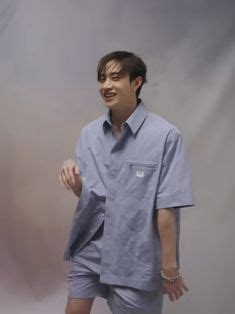The question of whether or not to sport bangs has perplexed women for centuries. While some see bangs as a chic and flattering accessory, others view them as a high-maintenance liability. From the glamorous Old Hollywood screen sirens to modern-day style icons, bangs have been a constant on the fashion landscape, evolving through myriad styles and trends.

The Allure of Bangs
Proponents of bangs extol their transformative power.
- Accentuate facial features: Bangs can draw attention to the eyes, highlight cheekbones, and minimize a wide forehead.
- Frame the face: They create a flattering silhouette, balancing out other facial features.
- Enhance hair volume: By adding fullness to the front of the hair, bangs can give the illusion of thicker, more voluminous locks.
- Versatile styling: Bangs can be styled in a variety of ways, from sleek and straight to bouncy and curled, offering versatility to any hairstyle.
The Drawbacks of Bangs
Despite their allure, bangs also come with a few caveats.
- High maintenance: Bangs require regular trims and styling to maintain their shape and prevent them from looking unkempt.
- Limited hairstyles: Bangs can restrict certain hairstyles, such as high ponytails or buns.
- Potential for damage: Over-styling or using heat tools on bangs can lead to breakage and damage.
- Not suitable for all face shapes: Certain face shapes, such as those with a narrow forehead or a long, pointed chin, may not be well-suited for bangs.
Bangs vs No Bangs: The Deciding Factors
Ultimately, the decision between bangs or no bangs is a personal one. Here are some factors to consider:
- Face shape: Oval, heart, and round faces often look best with bangs, while square and oblong faces may be better suited for no bangs.
- Hair texture: Bangs can be flattering on both straight and curly hair, but they may require more styling effort for curly or frizzy hair.
- Lifestyle: Bangs require regular maintenance, so they may not be ideal for those with busy schedules or who prefer a low-maintenance hair routine.
- Personal style: Bangs can add a touch of drama or personality to any look, but they should complement your overall style and personality.
Types of Bangs
If you’re leaning towards getting bangs, there are numerous styles to choose from:
- Curtain bangs: Long, face-framing bangs that are parted in the middle and gently curve around the face.
- Blunt bangs: Straight, cut-across bangs that create a bold and edgy look.
- Side-swept bangs: Bangs that are swept to one side, adding a touch of asymmetry.
- Wispy bangs: Delicate, layered bangs that create a soft and ethereal effect.
- Micro bangs: Extremely short bangs that end just above the eyebrows, known for their bold and avant-garde style.
Tips for Maintaining Bangs
If you decide to embrace the bangs life, here are some tips for keeping them looking their best:
- Get regular trims: Aim for trims every 4-6 weeks to remove split ends and maintain the desired shape.
- Use the right styling products: Apply a volumizing mousse or spray to add thickness and body to bangs.
- Avoid over-styling: Excessive heat styling can damage bangs. Use a blow dryer on a low heat setting and limit the use of curling irons or flat irons.
- Protect from heat: Use a heat protectant spray before styling bangs to prevent damage from heat tools.
- Accessorize: Headbands and hair clips can be used to add a touch of style to bangs or keep them in place.
Fringe Benefits of Bangs
Besides their aesthetic appeal, bangs can also provide some practical benefits:
- Protect eyes from sunlight: Bangs can shield your eyes from harmful UV rays.
- Reduce glare: By covering the forehead, bangs can help reduce glare and improve vision.
- Conceal blemishes: Bangs can help hide forehead wrinkles, scars, or other imperfections.
Conclusion
Whether you choose to rock bangs or embrace a bangs-free life, there’s no denying their undeniable impact on personal style. They can transform a look, accentuate features, and boost confidence. By carefully considering your face shape, lifestyle, and personal preferences, you can make an informed decision about whether bangs are the right fit for you. Remember, the beauty of hair is its versatility, and you can always experiment with different styles and find what makes you feel most beautiful.
FAQs
Q1. How often should I get bangs trimmed?
A1. Every 4-6 weeks for regular maintenance.
Q2. Are bangs suitable for all hair types?
A2. Bangs can be flattering on both straight and curly hair, but they may require more styling effort for curly or frizzy hair.
Q3. Can bangs damage my hair?
A3. Over-styling or using heat tools on bangs can lead to breakage and damage.
Q4. How can I style bangs at home?
A4. Use a volumizing mousse or spray, blow dry on a low heat setting, and avoid excessive heat styling.
Q5. Can bangs make my face look thinner?
A5. Yes, certain types of bangs, such as side-swept bangs, can create a slimming effect by elongating the face.
